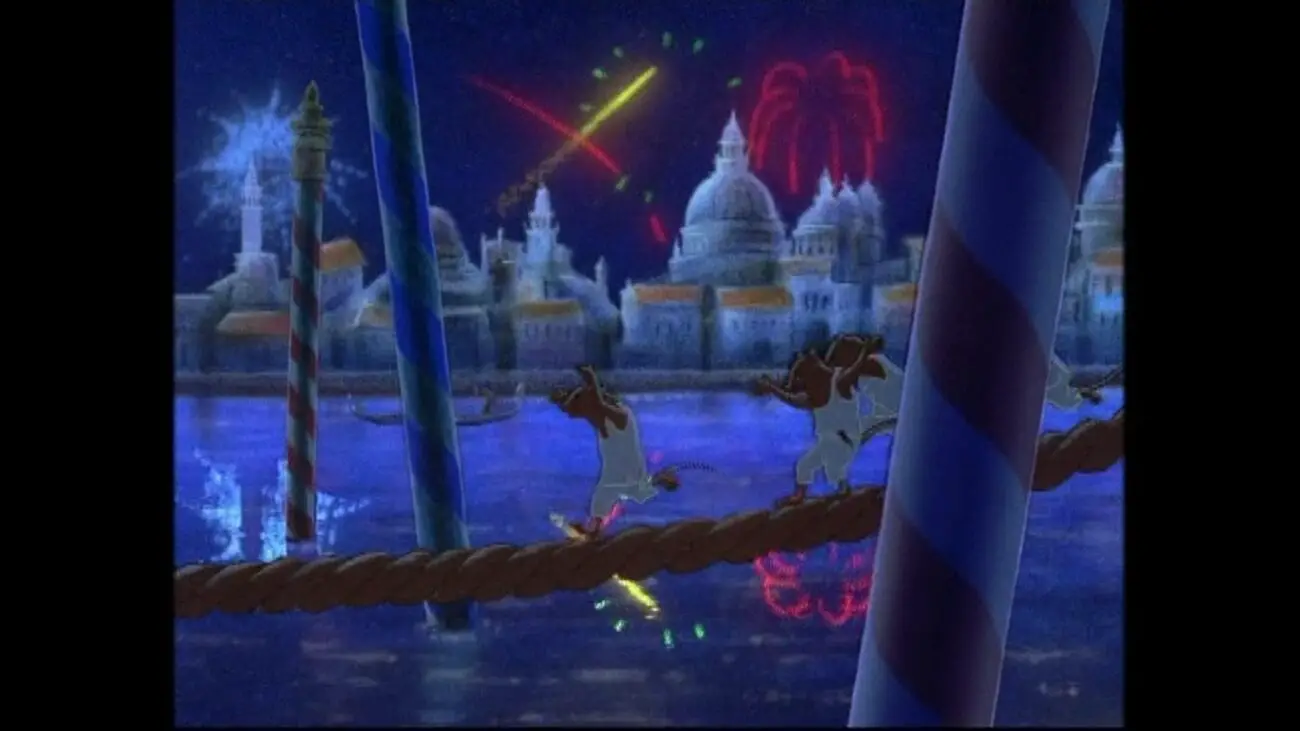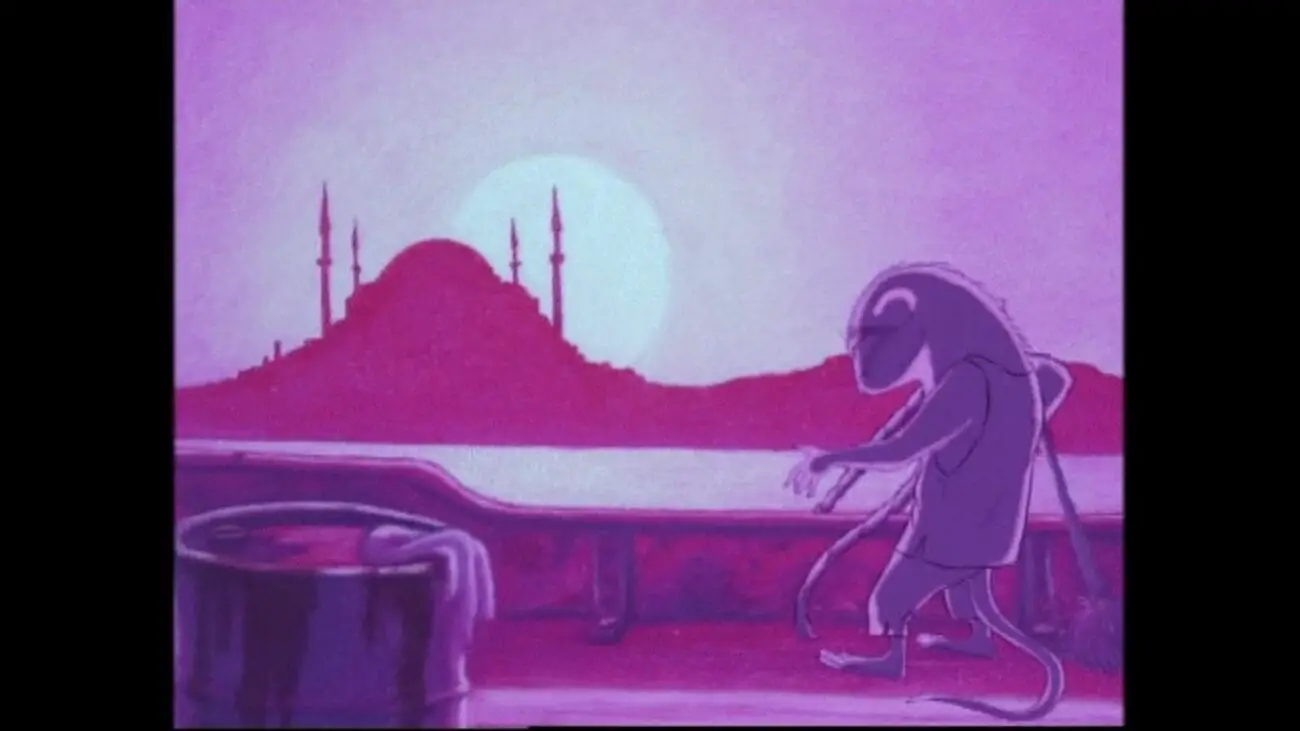I have never to my knowledge read Kenneth Grahame’s 1908 children’s novel The Wind in the Willows. Perhaps I had it read to me as a child, but if so, I don’t remember the experience with any vividness. Like most, I’m familiar with the story through its adaptations, not Ichabod and Mr. Toad, the Disney adaptation, which I’m sure is very fine, but through an obscure TV adaptation that aired on ITV on Christmas day, 1995, and which my parents, unknowingly having just conceived me, recorded on VHS for their three-year-old son.
Strangely, that time brought two different adaptations of the story, both starring former members of Monty Python’s Flying Circus, the other being Terry Jones’s live-action version starring Eric Idle released a year later. I don’t believe I have ever heard anyone outside my family refer to “our” adaptation of The Wind in the Willows, so we did indeed come to think of it as “ours.” The teleplay, which I’ve been told is a faithful adaptation, was written by poet Ted Walker, who went to the same school I did, and at which both my parents taught (though not at the same time). The film did in fact receive a sequel, The Willows in Winter, which won Emmys for both its animation and voice acting, but its profile has seemingly remained lower than it deserves.
It’s hard to quite express how the tale of Moley, Ratty, and Mr. Toad (and sometimes Badger) left such an indelible imprint on my formative imagination. There’s a splendid simplicity and modesty to the story and its world, as it introduces us to the naïve and restless Mole, who sets out from his dank home into the world and befriends Ratty, who teaches him the ways of the riverbank. However, beneath even the most placid surfaces, a poignant and troubled wanderlust stirs. Underneath the surface icons of a resolutely upper-middle-class, nostalgic, idealized evocation of the English countryside lies the unifying theme of a conflict between comfort and change.
You must listen to the river. it’s just the same as ever it was and as it always will be. Always changing and always the same.
Mole is an innocent and childlike character, as is Toad, and it’s they who pull you in as a youngster. However, the older I get, the more I come to see Ratty as the heart of the film and easily its most intriguing facet. Through him, the main theme of stagnation and flow finds voice. When first introduced, his take on things is clear. He declares himself firmly against the “wide world,” and waxes lyrically of the idle pleasures of home.
The river. [I live] by it and with it and on it and in it. It’s my world, and I don’t want any other. What it hasn’t got is not worth having.
Yet as the story goes on, his love of the river begins slowly to transform. He suddenly becomes restless, and in the film’s most beautiful sequence, dreams of voyages to far-off port towns to make the acquaintances of others like himself, living a life of adventure on the high seas, always changing, always familiar. His wanderlust becomes uncontrollable, and he sets off as if possessed, until Mole, instantly recognizing how out of character this desire is, stops him. It’s of course a foreshadowing of what will later happen with Toad, but also of a later moment of far more obscure significance. The whispering that led him to this strange yearning for more is revealed to have been the voice of Pan, an ephemeral paternal spirit, guardian of those who lose their way on the river.

A later sequence sees the young otter cub Portly go missing, absent for days and nights, with all the riverbank’s residents looking for him. As a trope, this lost child, discovered in the arms of a benevolent spirit of nature, is familiar. It reminds me a lot now of the final act of My Neighbour Totoro, but its significance here is unique. It is Rat’s encounter, really—in need of being led to Portly, he discovers something about the strange force that mystifies and enraptures him, the source of both his desire to be home and his repressed desire to wander. What these two have in common is a sense of belonging. Like nearly all good children’s stories, The Wind in the Willows is about knowing one’s place in the world.
It is very easy in a modern context to read a sexual undertone to all this. Ratty and Moley’s idyllic Cottagecore domestic setup and devoted, loving friendship are easily interpreted as a romantic life partnership. Such a meaning is also expressed in Ratty’s camp fussiness, protectiveness, and house pride, the monosexual nature of their all-male animal community, and of Ratty’s fantasy, bathed in lush, pink, “bisexual” lighting, and perhaps most tellingly of all, the beatific supine power of the elusive Pan. Perhaps this accounts for no small portion of the resonance of the story, and this adaptation in particular.

As he says of his boating pastime:
Whether you never get anywhere at all, you’re always busy—nothing in particular. And then there’s always something else to do.
The pleasure taken in one’s home and environment is a huge part of The Wind in the Willows. However, there is another facet to this idea of knowing one’s place. Ratty acknowledges and comes to understand his place in the world, and in acknowledging the presence of the higher power of Pan, he comes to see himself as part of something larger, the riverbank, his home. Of course, this is all contrasted against the frantic, ever-moving Toad. Ratty has his manias for fresh climes and his passion for boating and poetry, about which he is nonetheless extremely sensitive and protective, but he rigidly disapproves of the inconstant Toad, who always has new fancies. How we go about our chosen passions with consideration for ourselves and those around us is as much a core theme of The Wind in the Willows as anything else.
There’s a raw feeling of something indecent in the way Toad goes through passions, discarding them unsentimentally in favor of something new, as if justified through their ruinous excesses and callous recklessness. This is a stark contrast to the simplicity and beauty of Mole’s timid affection for his home or Rat’s private pride in his poetry, but the comparison is never forced. However, it is in the modernity of his passions, as well, that the danger arrives. This inconstancy takes on a destructive new form of the motorcar, of course a symbol of the modernizing influence about to banish the tranquillity of the riverbank into memory.
There are many reasons why this particular adaptation is so phenomenal: the animation (though clearly some expense was spared); the facial animation on the human characters, which is particularly janky, with a simplicity and homespun beauty to it; and the breathtakingly evocative background work. The character design on the animals is simply superb, wonderfully spontaneous and expressive. The score composed by Colin Towns is likewise delectable, measuring the comedic register against the reflective and sincere moments. The stories’ many poetic detours can often seem inscrutable to a child, yet their strange, lullaby power is still felt, even at a young age. One feels the significance of these moments, even as one feels not quite ready to appreciate their true significance.

Lest the awe should dwell, and turn your frolic to fret, you shall look upon my power at the helping hour, but then you shall forget.
On the subject of sound, it would be unforgivably remiss to overlook the voice performances. In her narration, Vanessa Redgrave’s maternal presence does sterling justice to the blissful prose, and the other voice casting is impeccable. Michael Palin brings a warming, poignant gravitas to Rat, Alan Bennett an unaffected innocence and vulnerability to Moley, and Rik Mayall, a fantastic comic actor, delivered what may have been his finest performance in the role he was born to play, Toad. A zany ball of energetic pomposity, he’s a lovable, laughable antihero who provides the film with its most comical moments, with Mayall delivering the energy of a cartoon character to every single line.
The episodic adventures of a cartoon toad, mole, rat, and badger may seem to have little to offer to those who are not or did not grow up in their company, but I’ll always consider this one of the best British animated movies, capturing as it does a nostalgic beauty and love of nature and simplicity, as well as a poignant and reflective treatise on one’s passions and one’s chosen place in the world.



